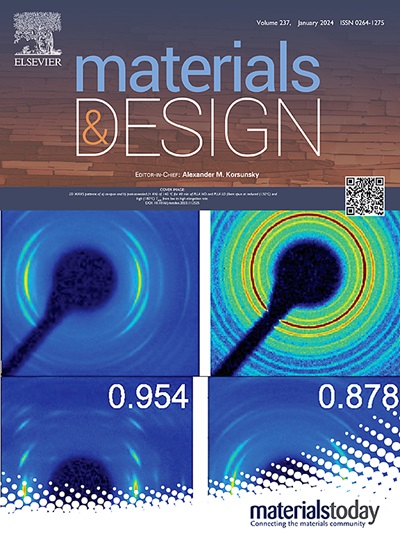复合材料结构的拓扑和纤维路径优化:综述
IF 7.9
2区 材料科学
Q1 MATERIALS SCIENCE, MULTIDISCIPLINARY
引用次数: 0
摘要
纤维增强复合材料由于具有高比刚度和强度等优异性能,在全球范围内广受欢迎。除了有利的物理属性外,这些材料的机械特性还可以根据不同的应用进行定制,以最大限度地提高其性能。增材制造技术的最新进展使曲线纤维的制造成为可能,从而进一步改善了内部负载分配。当刚度定制与拓扑优化相结合时,复合材料结构会变得更加有效,拓扑优化涉及确定特定结构设计问题的理想材料分布。然而,材料各向异性和几何形状的综合优化带来了固有的挑战,促使人们开发出各种不同的方法。本综述文章总结了目前最先进的复合材料设计技术,这些技术可先后或同时优化纤维路径和结构拓扑。与许多基于优化或材料参数化方案进行分类的现有著作不同,本文根据现有方法的范围和内在原理对其进行了分类。本文还涉及实验结果,这是另一个难得的特点。论文从有效性、易用性、计算成本、通用性、鲁棒性和制造适用性等多方面讨论了所研究方法的优势和不足。综述最后对相关的未决问题和潜在的未来研究方向进行了评论。本文章由计算机程序翻译,如有差异,请以英文原文为准。

Topology and fiber path optimization of composite structures: A critical review
Fiber-reinforced composites have gained worldwide popularity due to their superb properties including high specific stiffness and strength. In addition to their favorable physical attributes, the mechanical characteristics of these materials can be tailored to maximize their performance for distinct applications. Recent advances in additive manufacturing have enabled the fabrication of curvilinear fibers, which can further improve internal load allocation. Composite structures become even more effective when stiffness tailoring is combined with topology optimization, which concerns determining the ideal material distribution for a specific structural design problem. However, collective optimization of material anisotropy and geometry poses inherent challenges that prompted the development of diverse methodologies. This review article summarizes the state-of-the-art composite design techniques developed to optimize fiber paths and structural topology sequentially or simultaneously. The available approaches are categorized according to their scope and intrinsic principles unlike many existing works employing classification based on optimization or material parametrization schemes. The paper also covers experimental results as another rare feature. The advantages and shortcomings of the investigated methods are discussed considering various aspects including effectiveness, ease of use, computational cost, versatility, robustness, and suitability for manufacturing. The review concludes with remarks on relevant open problems and potential future research directions.
求助全文
通过发布文献求助,成功后即可免费获取论文全文。
去求助
来源期刊

Materials & Design
Engineering-Mechanical Engineering
CiteScore
14.30
自引率
7.10%
发文量
1028
审稿时长
85 days
期刊介绍:
Materials and Design is a multi-disciplinary journal that publishes original research reports, review articles, and express communications. The journal focuses on studying the structure and properties of inorganic and organic materials, advancements in synthesis, processing, characterization, and testing, the design of materials and engineering systems, and their applications in technology. It aims to bring together various aspects of materials science, engineering, physics, and chemistry.
The journal explores themes ranging from materials to design and aims to reveal the connections between natural and artificial materials, as well as experiment and modeling. Manuscripts submitted to Materials and Design should contain elements of discovery and surprise, as they often contribute new insights into the architecture and function of matter.
 求助内容:
求助内容: 应助结果提醒方式:
应助结果提醒方式:


